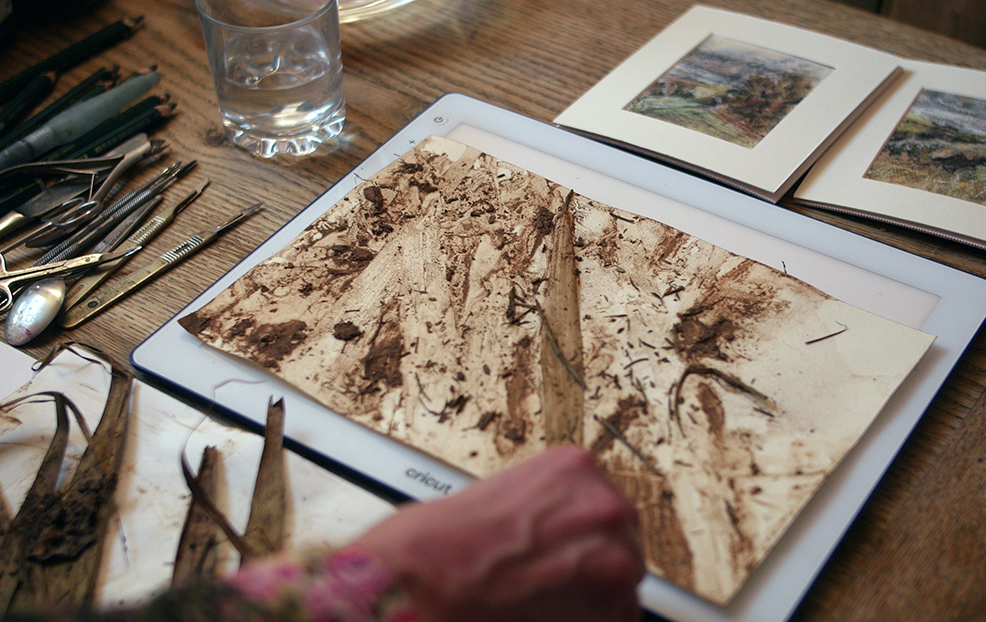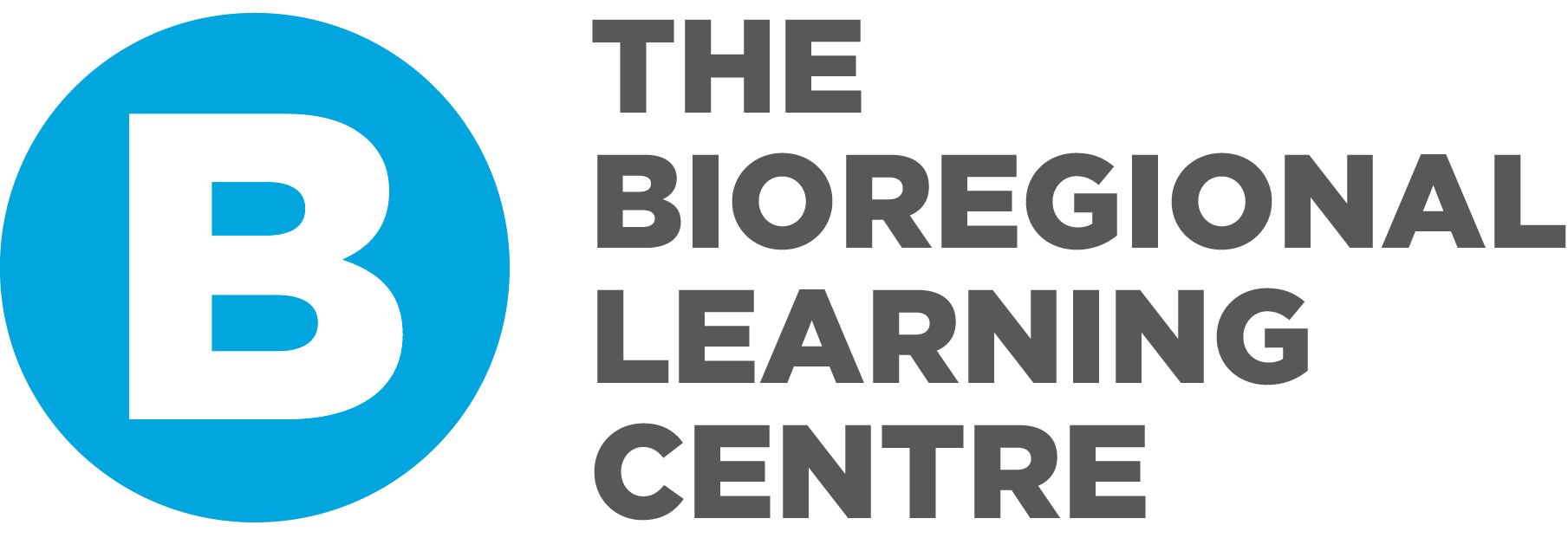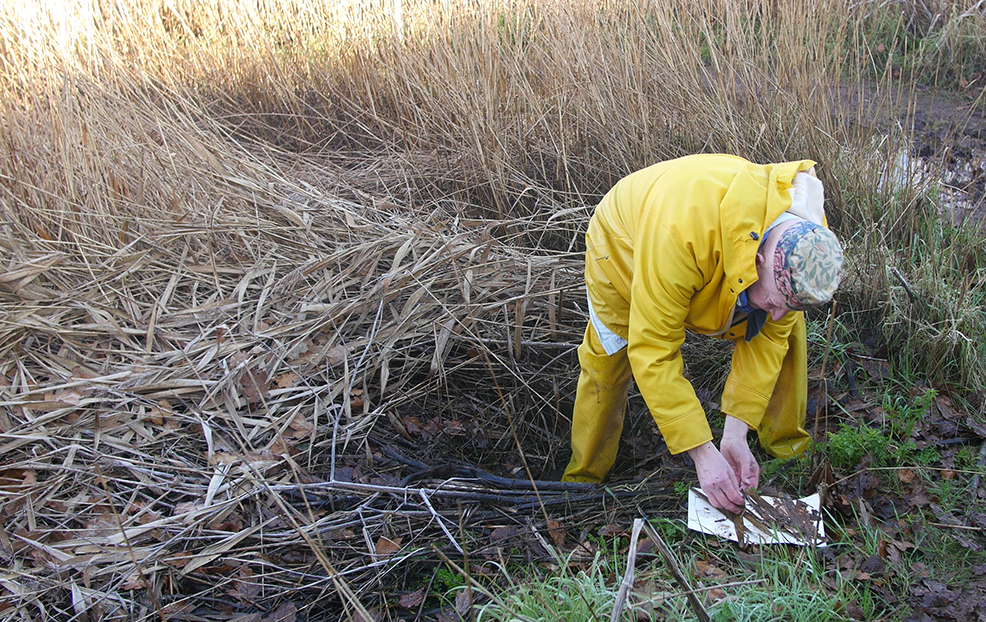A conversation with local artist and collaborator Ivan Grieve. Ivan is one of five local artists participating in Phase 2 of Living Dart: The Saltmarsh Project. After an introduction to the saltmarshes surveyed by the project team in and around Totnes, Dittisham and Stoke Gabriel, each artist began to explore their own relationship with these estuarine edge places. The “unwrapping” of their experiences will be part of an evening event at Totnes Cinema, 25th March 2024.
What significance do the Dart’s saltmarshes hold for you?
I walk to the tidal reedbeds a lot. It’s a place to think. It’s measured. It’s seasonal–I’ve been following the seasons up and down the river from Dartmoor to the sea at Dartmouth, finding places where I can sit and draw that are peaceful. It’s escapism as well… these places are very textural and haunting. Different kinds of saltmarshes are to be found in estuaries all over the country, and seeing work from Welwick (Yorkshire) artists, it’s the same thing–we’re looking for very soulful places. Why do people go to Dartmoor, to be windswept? It’s that whole ethereal thing. We’re all looking for spirituality, a connection with nature and earth.
How do you plan to interpret and convey this through your art?
I like the idea of layering and pressing. So, for example, there’s taking a leaf and making a print from it. Pressing using mud, or failing that, cheating a little bit by shaking earth up with some water in an atomizer and spraying a plant head or a shape onto paper. I had the idea of burying canvases to get a tideline going up and down, to give tide lines that will be unique to the area. That makes a really nice surface to start off with, because I tend to work gesturally with these materials.
You incorporate natural pigments and marks made with found materials into your work – can you tell me more about this way of working?
It came about because it’s a bonding experience with where you are. So you go to a spot–we’ve all done the thing of going to a beach and finding a shell, or there’s that little precious bit of glass that you bring back. There’s an essence there. But it’s also about being there. To take a piece of paper with you, or to take some canvas, is partly to break down that fear of that blank canvas, so you can be very liberal with it. If you take a lump of mud and just start smearing it with your fingers, it stops you being so precious. It’s also all-weather, so I can generally just pick up a bit of earth and start. Then there are the scratching materials, like feathers or anything that’s there.
I take reference photographs when I’m there to be able to compare them and as a document of time spent. Bringing back the work to the studio is like a gift–like unwrapping a Christmas present and going ‘Oh, look what I’ve got.’ There’s excitement because you brought back something. I take a pencil and charcoal with me, so in addition to site specific materials I can just make marks with these. The idea really is multifaceted–it’s to have a connection with the landscape and to have a note that I’ve brought back, and to have a little gift.

Photo credit: Emilio Mula
What role do you see art as playing in communicating about biodiversity loss and the climate emergency?
Art crosses so many barriers. My nine-year-old daughter has sat next to me and drawn using sheep’s poo, realising that the materials to express are what you make of them. Young people don’t need to know that much about climate change, but it gives them a chance to sit down and think. Also, if you’re able to bring these things back, like a gift, to those people who can’t get out and have a look at the landscape, they are then able to hold and see something of the environment, and to be part of it. It breaks down all of those barriers, of ability and disability.
Increasingly landowners are shutting off public access, and in some cases in doing so absolving themselves of some of the more delicate aspects of land management. A genuine interest in projects like this, and our fragile ecosystems, does need to be demonstrated through becoming involved and being part of the discussion. I think this is a good example of where art could offer greater accessibility to the topic of climate change.
What impact do you imagine that combining science and art will have?
Based on the connections that I’ve made with several organisations–one being Art from Heart, and another the magazine, Artists Responding To–there is deep recognition of our environmental impact. So, I think artists cross pollinating with organisations with scientific and technical skills is a way to spread the message. Artists can draw attention through a wide variety of means of expression. River edges are very multi sensorial–the smell, the sounds and movements, the colours and textures…for artists this provides inspiration for work and expression. Artists’ tools are different, so things can be said in different ways, having quite a different audience appeal.
What kind of response do you hope that Living Dart: The Saltmarsh Project inspires among the local community and beyond?
Their involvement. I noticed that the first stage of the project was quite techy-sciency, involving techy-sciency people who all seem to know each other. And the artists in Totnes tend to be very behind-closed-doors. So hopefully it will open doors to new collaborations and discussions, so that everybody’s getting involved in something more grounded, more fun. It’s a matter of trying to reach people on all levels.

